Dateline – December 2019 – Carrollton, Texas
It’s not uncommon for Beavers to build dams on urban waterways here in the Dallas/Fort Worth metroplex, and this one is pretty typical. A small creek about 4 miles from its rendezvous with the Trinity is the site. The dam itself follows the terrain through a gentle question mark-shaped curve. Mud and cattail reeds were used in its construction. The resulting pond has created a great wetland habitat in microcosm–an urban oasis.


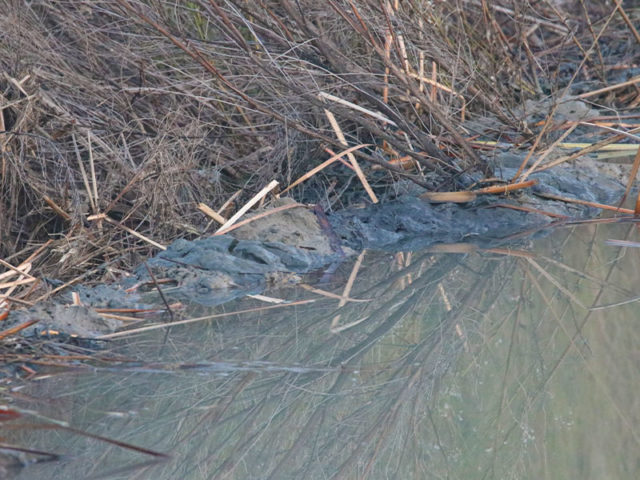
Beaver sign abounds here. Several of the young Black Willows on the water’s edge have been cut at the base, the fallen trunks stripped of branches. Every night the surface area of exposed water increases a bit as the Beavers remove more and more reeds from the perimeter.
The crown jewel of this Beaver pond is the massive lodge stationed roughly in the center of the basin. This huge structure is made of reeds and branches and mud. Lots of mud. And every night the busy Beaver adds a little more. This is the surest sign that at least one Beaver remains active in this pond.





I took it as my mission to get a look at our resident aquatic rodent and secure some photographs to document his presence. Beavers are ordinarily nocturnal in their habits, so I calculated that my best opportunity would come by arriving just before dawn. My hope was to get a chance for a few pictures at first light, just before the Beaver called it a night.
So, that’s what I did. I brought a lawn chair and stationed myself pond-side about 30 minutes before daybreak. I cranked the ISO up on my digital camera so that I could record photographs in the low light, and I sat in the December cold waiting for something interesting to happen.

On the first morning, I did not have to wait long. In the darkness I could hear splashing and grunting. Next came the sounds of crunching and munching as Mr Beaver dined on cattail reeds. Ripples in the water could be seen in the meager light provided by the nearby street lighting, but the Beaver stayed well hidden in the murky shadows.
The sky behind me grew pink with the rising of the sun, and as the first light reached the water I caught a glimpse of the Beaver as he surfaced momentarily in the water just behind the lodge. He grunted, slapped his tail, and disappeared under the black water. And that was it. He did not show again.
So, no pictures on my first try. But the Beaver did do me the courtesy of revealing the location of the entrance to his lodge. Now I knew where to watch on followup attempts.
Unfortunately, the next morning went the exact same way. And the next. And the next. And the next—with each daybreak stakeout a little colder than the one before. Even though Beavers are nocturnal in their habits, some will remain active for a short while after the sun comes up… but not this one. This Beaver would consistently make a brief appearance just before first light, and the take it to the house.
Obviously this situation complicates picture taking a bit. There is only so much you can do when its pitch dark out and you subject is hidden in the shadows. On my sixth morning at the pond, I threw a Hail Mary. When I heard the familiar sounds of Mr Beaver chowing on cattail reeds, I pointed my camera in the general direction and took a few pictures blind.
Reviewing the pictures back at the house revealed that I had gotten lucky. There sat the Beaver, just to the side of his lodge, peeking out of the water and keeping an eye on me. Moments later he would retreat into his home, not to reappear again until darkness began to fall.

On most mornings I stuck around well after sunup in the hopes that Mr Beaver might make a repeat appearance. That never happened, but it was okay because there was a consolation prize. Beaver ponds make great wetland habitat, and that means they attract many forms of urban wildlife. There was always plenty of other critters to observe and photograph. Here is a sampling…



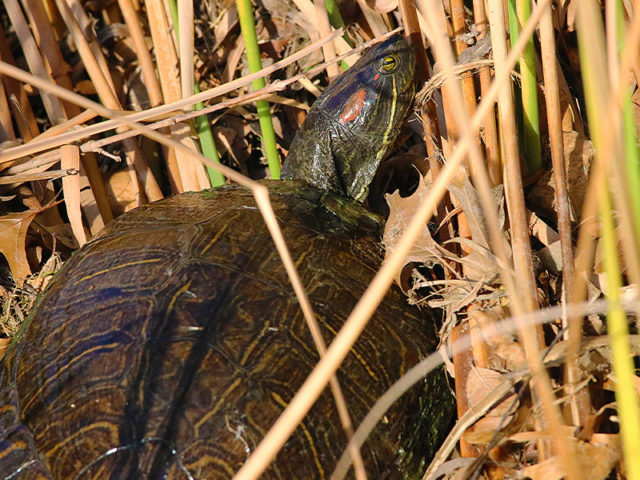
Red-eared Sliders began to emerge from the depths




to make his little two stage “fee-bee” call
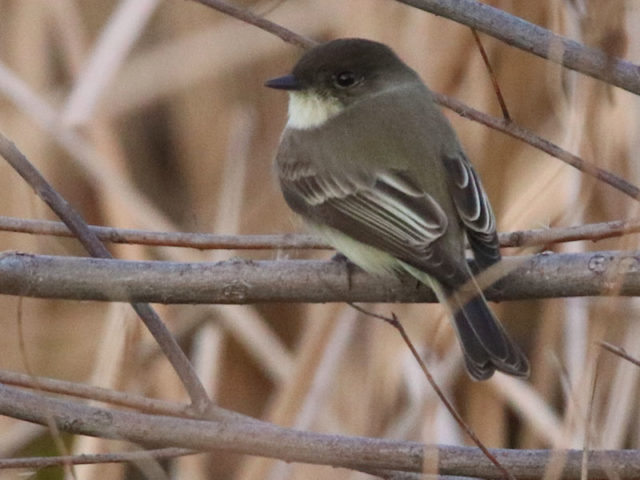



were very unhappy with the Red-shouldered Hawk’s presence




Moments outdoor don’t always turn out the way you hope they will. So, while I didn’t get a chance for the pictures of the Beaver I was hoping for, I did get a chance to see how a Blue Jay eats an acorn, and that counts for something! This is how it is done…

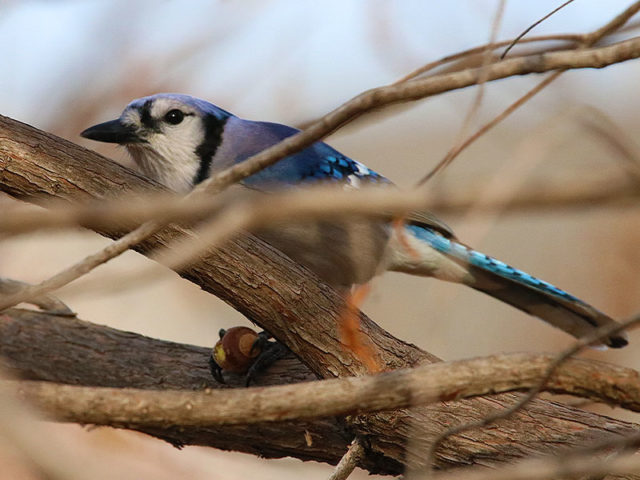

to crack the shell and break off pieces of the meat

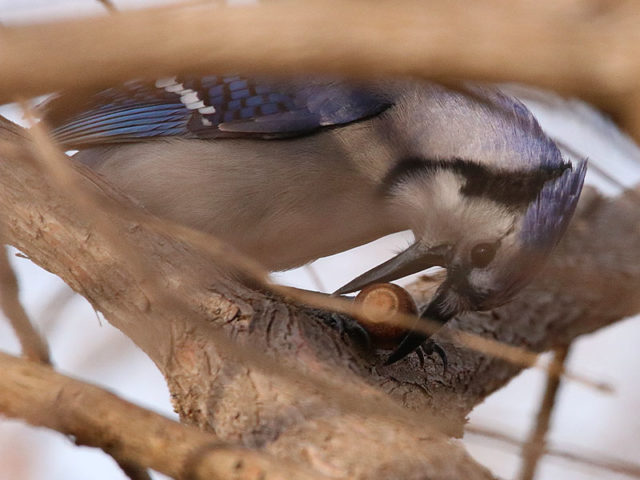














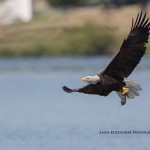
Nice work. I’m impressed. You follow nature. My shortcut is to follow Chris Jackson’s adventures. I would like to hire you as a guide for myself and daughter to explore nature sometime so that my daughter and I can learn some stuff.
Hi James, thanks for the kind words. While I’m not really for hire in that capacity, I am more than willing to help you guys along in other ways. I recommend jumping in with both feet. Start in your own neighborhood and parks. We actually have a ton of excellent nature areas all over the metroplex. Plenty great places to explore. Always feel free to drop me an email with any questions!
-Chris
My HOA board just voted to “trap and kill” two beavers that live on our property. They used to trap and release” but now it’s “trap and kill”. Are there any facts we can quote to argue that beavers are beneficial?
The DFW Wildlife Coalition is a good place to seek assistance with type of issue. I believe they have programs to do outreach and counseling in cooperation with HOAs. Here is their web page addressing issues involving Beavers.
https://dfwwildlife.org/beaver/#1536262382233-1726e5fb-d96f